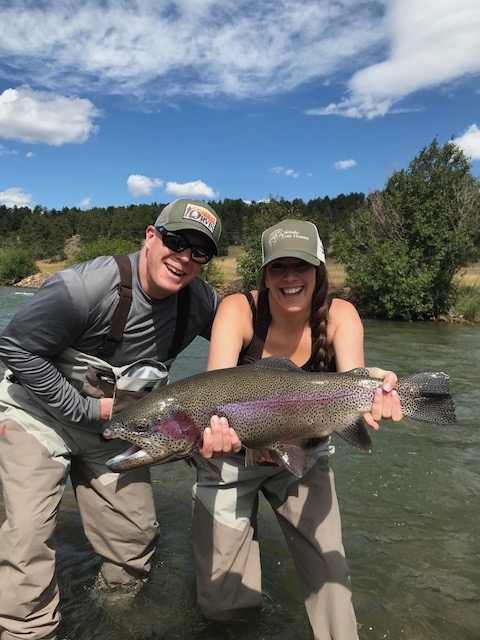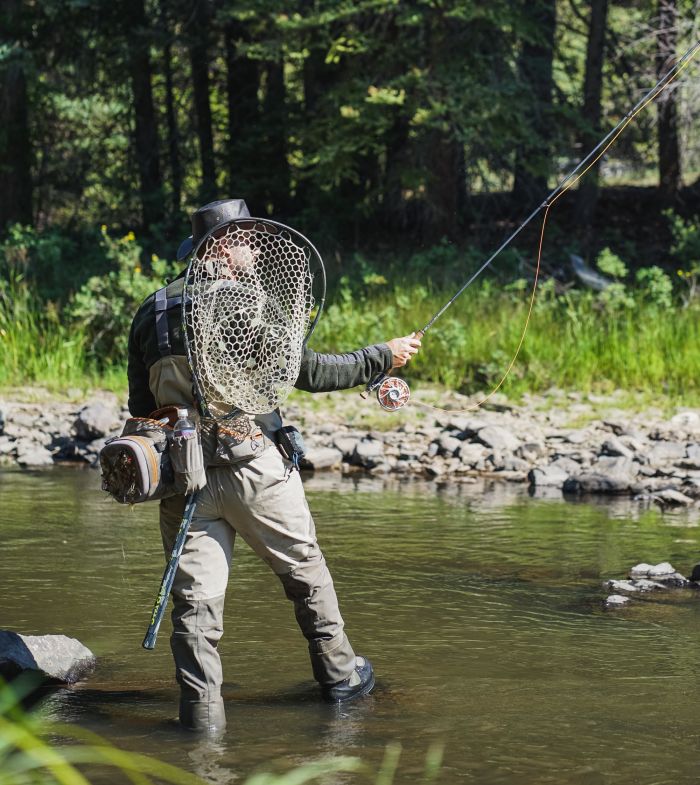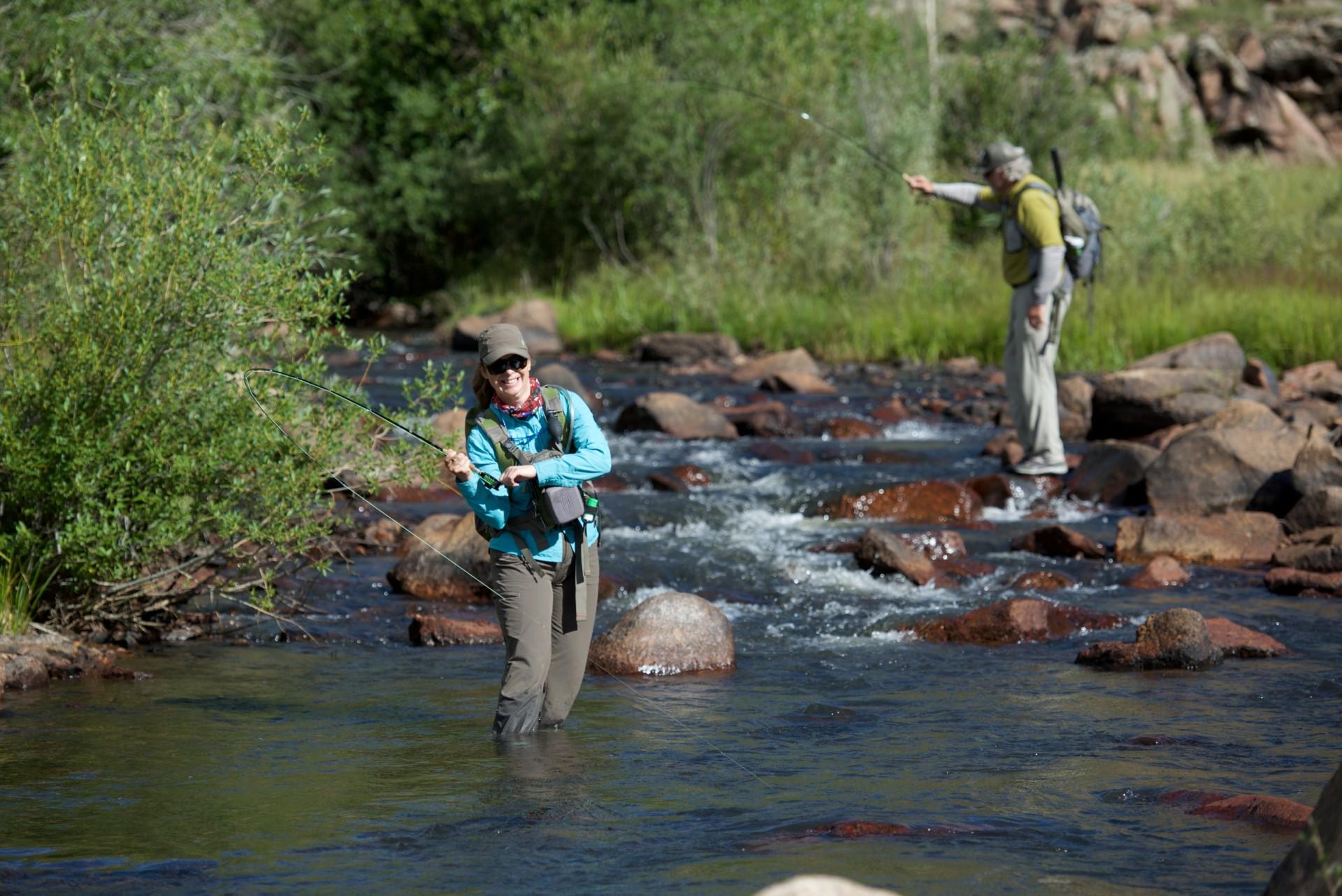Imagine standing knee-deep in a crystal-clear mountain stream, the cool water rushing past your legs as you cast your line with precision. Fly fishing in Colorado offers you this exact experience—where every cast brings a new thrill and every catch feels like a victory.
Whether you’re a beginner or an experienced angler, Colorado’s rivers and lakes promise unforgettable moments. Ready to discover the best spots, tips, and secrets to make your fly fishing adventure truly exceptional? Keep reading, and get ready to transform your next fishing trip into an experience you’ll never forget.
Best Fly Fishing Locations
Colorado offers many amazing spots for fly fishing. The state is known for clear waters and healthy trout populations. Anglers find both easy and challenging places to cast their lines. From well-known rivers to quiet mountain streams, there is something for every skill level. Here are some of the best fly fishing locations in Colorado.
Rivers With Abundant Trout
The South Platte River is a top choice for trout fishing. It flows through beautiful landscapes and holds many brown and rainbow trout. The Fryingpan River is another favorite. It is famous for its clear water and large fish. These rivers offer good chances to catch trout all year.
Hidden Lakes And Ponds
Colorado has many small lakes and ponds that few people visit. These places often have healthy trout and less fishing pressure. Examples include Echo Lake and Turquoise Lake. These quiet spots are perfect for anglers who want peace and solitude. They also provide great chances to catch fish close to shore.
Mountain Streams For Experts
High mountain streams offer a real challenge. Streams like the Roaring Fork River have fast currents and cold water. These spots need skill and patience. They are best for experienced fly fishers. The reward is catching wild trout in a stunning mountain setting.
Seasonal Fishing Hotspots
Some locations shine during certain seasons. The Arkansas River is famous in summer for big brown trout. Spring brings high flows and good fishing to the Blue River. Fall colors create a beautiful backdrop for fishing at Eleven Mile Reservoir. Planning trips around seasons helps anglers catch more fish.

Credit: coloradotrouthunters.com
Essential Gear And Equipment
Fly fishing in Colorado needs the right gear to enjoy the experience fully. The right equipment helps catch more fish and keeps you comfortable. Knowing what to bring makes your trip smooth and fun.
Each piece of gear has a role. From rods to flies, everything matters in fly fishing success. Let’s explore the essential gear and equipment for a great day on Colorado’s waters.
Choosing The Right Rod And Reel
Pick a rod that matches the fish size you want to catch. A 5 to 7 weight rod works well for most Colorado streams. The reel should balance the rod and have a smooth drag system. Lightweight rods and reels help reduce fatigue during long fishing sessions.
Fly Selection Tips
Choose flies that imitate local insects in Colorado waters. Dry flies, nymphs, and streamers all work in different situations. Check what bugs are hatching before you fish. Carry a variety of flies to adapt to changing conditions.
Waders And Apparel
Wear waterproof waders to stay dry and warm. Breathable materials are best for comfort. Layer your clothing to handle cool mornings and warm afternoons. Don’t forget a hat and polarized sunglasses to protect from sun glare.
Tackle Box Must-haves
Keep essential tools like nippers, forceps, and a hook sharpener in your tackle box. Add extra leaders, tippet material, and floatant for dry flies. Organize flies by type and size for easy access during fishing.
Techniques For Success
Fly fishing in Colorado offers a unique challenge. Success depends on using the right techniques. Understanding these techniques improves your chances to catch fish. Each method helps you connect better with the water and the fish.
Focus on learning simple skills first. These basics build a strong foundation. Then, add more advanced methods as you gain experience. Practice and patience make fishing more enjoyable and fruitful.
Casting Methods For Beginners
Start with the basic overhead cast. Hold the rod firmly but not tight. Lift the rod smoothly to send the fly line forward. Keep your wrist straight during the cast. This method helps you place the fly where you want.
Try the roll cast to avoid snags. It works well in tight spaces. Use short, controlled movements for better accuracy. Practicing these casts helps you fish in various river spots.
Reading Water Currents
Observe how water moves around rocks and bends. Fish often stay where currents slow down. Look for smooth water behind rocks or near riverbanks. These spots offer shelter and food for fish.
Watch for changes in water color and flow speed. These signs show where fish might be waiting. Learning to read currents guides your fly placement and improves catches.
Nymphing And Dry Fly Techniques
Nymphing uses weighted flies that sink below the surface. It works well in deep or fast water. Keep your line tight to feel bites. Let the fly drift naturally with the current.
Dry fly fishing uses flies that float on top. Watch your fly closely for any movement. A gentle splash or pull means a fish is interested. Both methods give you options for different conditions.
Setting The Hook Properly
When a fish bites, do not pull too hard. Lift the rod tip quickly but gently. This action sets the hook in the fish’s mouth. A soft but firm motion prevents the fly from coming loose.
Practice timing your hook set. Too early or late can lose the fish. Feel the bite, then act with a smooth, confident move. Proper hook setting increases your catch rate.

Credit: www.broadmoor.com
Local Regulations And Licensing
Fly fishing in Colorado offers an amazing experience with beautiful rivers and streams. Knowing local rules is important. These rules protect fish and keep the waters healthy. Every angler must follow state regulations. This helps maintain a great fishing environment for everyone.
Fishing Permits And Licenses
All anglers need a valid fishing license to fish in Colorado. Licenses can be bought online or at local stores. Different licenses exist for residents and visitors. Some waters require special permits. Always carry your license while fishing. Fishing without a license can lead to fines.
Catch And Release Rules
Many Colorado rivers encourage catch and release to protect fish populations. Use barbless hooks to reduce injury. Handle fish gently and keep them in water as much as possible. Some species must be released immediately. Follow size and daily limits strictly to help fish grow and thrive.
Protected Areas And Seasons
Certain areas have special rules to protect wildlife. Some rivers close during spawning seasons to allow fish to reproduce. Check local maps and regulations before fishing. Respect all posted signs and boundaries. Fishing outside allowed seasons or in protected zones can harm fish populations and lead to penalties.
Tips For Planning Your Trip
Planning a fly fishing trip in Colorado takes some thought and care. Knowing the right time to visit, how to find help, where to stay, and what to expect with weather makes the experience better. These tips will help you prepare well and enjoy your trip more.
Best Times To Visit
Spring and early summer bring warm weather and good fish activity. Late summer can be hot but still good for fishing in higher areas. Fall offers cooler air and colorful leaves, a great backdrop for fishing. Winter is cold and many spots freeze, so plan accordingly.
Hiring Guides And Outfitters
Local guides know the best fishing spots and techniques. They provide equipment and teach you how to fish effectively. Hiring a guide saves time and increases your catch chances. Many outfitters offer packages for beginners and experts alike.
Accommodations Near Fishing Spots
Choose lodging close to rivers or lakes to save travel time. Cabins, lodges, and campgrounds are common near popular fishing areas. Booking early ensures the best options during peak season. Some places offer packages including meals and fishing trips.
Safety And Weather Considerations
Weather can change quickly in Colorado’s mountains. Carry rain gear and dress in layers to stay comfortable. Watch for flash floods and strong winds near rivers. Carry a first aid kit and know basic safety rules for outdoor activities.

Credit: anglerscovey.com
Conservation And Ethical Fishing
Fly fishing in Colorado offers a unique chance to enjoy nature’s beauty. Conservation and ethical fishing play a key role in protecting these waters. Anglers must care for the environment and fish populations. This ensures healthy rivers for future generations to enjoy.
Minimizing Environmental Impact
Use barbless hooks to reduce fish injury. Avoid stepping on riverbanks to protect fragile plants. Carry out all trash and leftover bait. Choose fishing spots that do not harm spawning areas. Use reusable gear to lower waste in nature.
Respecting Wildlife And Habitats
Keep a safe distance from wildlife along the river. Do not disturb nests or dens near fishing spots. Fish only during allowed seasons to avoid stressing fish. Follow local rules on catch limits and size. Handle fish gently and release them quickly.
Community Efforts To Preserve Fisheries
Join local groups that clean and restore rivers. Participate in events that plant trees near streams. Support projects that track fish health and water quality. Share knowledge about ethical fishing with others. Help keep Colorado’s fisheries strong and vibrant.
Frequently Asked Questions
What Is The Best Time For Fly Fishing In Colorado?
The best time for fly fishing in Colorado is late spring through early fall. Trout are most active during these months due to favorable water temperatures and insect hatches. Early mornings and late evenings offer prime fishing conditions.
Which Colorado Rivers Are Top For Fly Fishing?
Top Colorado rivers for fly fishing include the South Platte, Fryingpan, and Colorado River. These rivers are known for abundant trout populations and scenic surroundings. Each offers diverse fishing experiences suitable for beginners and experts.
What Gear Is Essential For Fly Fishing In Colorado?
Essential gear includes a 5-7 weight fly rod, reels with smooth drag, and durable waders. Also, bring a variety of flies like dry flies, nymphs, and streamers. Proper gear ensures comfort and success on Colorado’s waters.
Are Fishing Licenses Required For Fly Fishing In Colorado?
Yes, a valid Colorado fishing license is required for all anglers 16 and older. Licenses can be purchased online or at local retailers. Special regulations may apply depending on the waterbody or season.
Conclusion
Fly fishing in Colorado offers a peaceful way to enjoy nature. Rivers and streams teem with trout, perfect for all skill levels. The fresh mountain air and scenic views add to the experience. Whether alone or with friends, time by the water feels rewarding.
Plan your trip carefully and respect the environment. Each cast brings calm and excitement. Colorado’s waters invite you to try fly fishing soon. A simple joy that stays with you.

Tony is a professional fishing instructor, and his hobby is fishing! He has been fishing for the last four years, and he loves the fishing instructor profession. Based on his experiences with different types of fishing, he shares his opinion about various fishing techniques so that a beginner can get started right away. Find him on Twitter. Happy reading!

